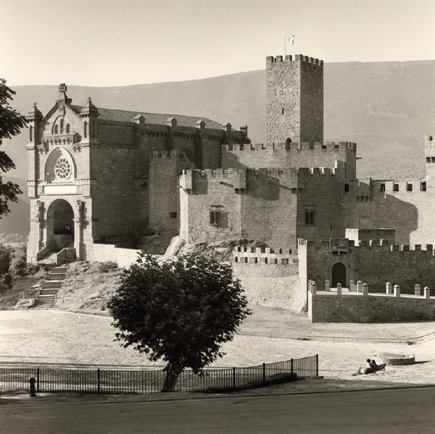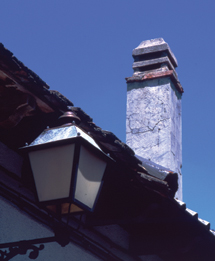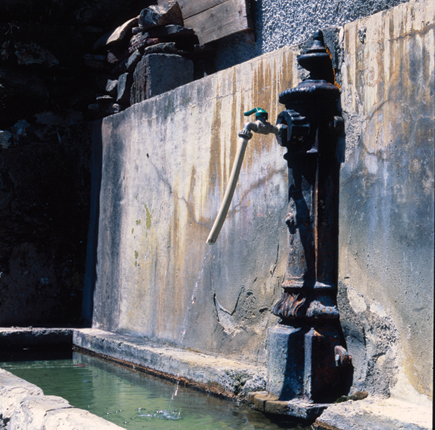Zeiss ZV Lenses For Hasselblad; Classics In The Modern Age Page 2
 |
|
|
Evenness of illumination is predictably worst with the widest angle, the 50mm
Distagon: about a couple of stops at the very corners at full aperture. By f/8
with the same lens, a typical MF shooting aperture, it's only about one
stop at the corners and at the edges of the frame (the straight sides) it's
only about half a stop. With the 120mm Makro-Planar it's about a stop
at f/4 and maybe 1/4 stop at f/8 (corner values: edges, 2/3 stop at f/4 and
1/10 stop at f/8). With the 180mm Sonnar it's under a stop at f/4 and
about 1/3 stop at f/8 (corner values: edges, 2/3 stop at f/4 and maybe 1/10
stop at f/8).
As for distortion, you need to distinguish between the edges of the frame (about
28mm out from the center), where straight lines may bow inward (pincushion)
or outward (barrel), and the corners, where distortion is effectively invisible
anyway. Percentage distortion for the three lenses, edge/corner, is as follows:
50mm Distagon (barrel), about 1.5/1.0 (yes, it's less at the corners);
120mm Makro-Planar (barrel), <0.1/0.2; 180mm Sonnar (pincushion), 0.6/1.2.
Even 1 percent distortion is trivial and rarely perceptible; under 1 percent
is negligible, and the Makro-Planar is justly regarded by many as a reference
point for distortion and illumination.
 |
|
 |
|
|
The Distagon is nine glasses in eight groups, retrofocus-type; the Makro-Planar
is six glasses in four groups, a symmetrical derivative; and the Sonnar, although
misleadingly described as a "high-performance telephoto" by Zeiss
themselves, is in fact like all Sonnars a Cooke Triplet derivative, non-telephoto,
with five glasses in four groups. All surfaces are common curves (no aspherics)
and all are T* coated, Zeiss' standard and (like everything Zeiss) as
good as the very best.
Zeiss reckoned that very few photographers would miss the floating element control
on the 50mm, and they are probably right: certainly, the differences are pretty
minor in most pictures, and when I have used manually adjusted floating element
lenses, I know that I have neglected to set the floating element as often as
not. Maybe this makes me sloppy, but I know full well that I am not alone among
professional photographers in this.
I shot a fair amount of color for the purposes of the test (Fuji Velvia 100
home-processed in Tetenal chemistry using a JOBO CPE-2), and although the results
were very good, I have to admit that for me, the true appeal of these lenses
is for black and white where they have "sparkle." "Sparkle"
is easier to see than to describe, but according to research by both Ilford
and Zeiss it corresponds to a very high MTF at relatively low frequencies. Probably
the best "sparkle" would have been with Delta 100 but I prefer the
tonality of HP5 Plus so that's what I mostly used.
Technical Specifications |
|||
| Lens | Classic 50 |
Classic 120 |
Classic 180 |
| Focal Length |
51.9mm |
120.9mm |
179.4mm |
| Aperture Range (1/2 Stop Rests) |
f/4-f/32 |
f/4-f/32 |
f/4-f/32 |
| Glasses/Groups |
9/8 |
6/4 |
5/4 |
| Closest Focus | 50cm 19.7" |
80cm 31.5" |
1.55m 61" |
| Image Ratio At Closest Focus |
1:6.3 |
1:4.5 |
1:6.6 |
| Area Covered At Closest Focus |
351x351mm (13.8") |
246x246mm (9.7") |
361x361mm (14.2") |
| Angle Of View In Degrees (Diagonal/Horizontal) | 74/57 |
36/25 |
24/18 |
| Filter Thread | 67mm |
67mm |
67mm |
| Lens Shade Fitting | 60 bay. |
60 bay. |
60 bay. |
| Weight | 790g 27.9 oz |
890g 31.4 oz |
1130g 39.8 oz |
| Dimensions (mm) (Diameter/Length) | 80x92.3 |
80x107.6 |
80x128.4 |
| Dimensions (Inches) (Diameter/Length) | 3.2x3.6 |
3.2x4.2 |
3.2x5.1 |
| Recommended Prices | $3875 |
$3875 |
$3875 |
The real question is, why do these lenses exist? Well, Imacon/Hasselblad seems
to see classic Hasselblads ("V-series") as belonging to the past
rather than the future. They survive on a mixture of sentiment, marketing, and
just-strong-enough sales to keep them afloat. On the used market, they are available
in vast numbers, and can be kept in service virtually forever with a minimum
of maintenance: there's not much to go wrong, after all, in either a 500-series
body or back. Most of the engineering is in the lens, which is presumably why
Zeiss considers the Classic series worthwhile. But why buy a new ZV-series lens
when there are plenty of older, used lenses on the market?
There's a strong clue in the question itself: the single word "new."
These are new lenses from one of the finest manufacturers in the world; many
would say, the finest bar none, though there are a very few others in the same
class. Apart from the 80mm Planar they are probably the three most iconic lenses,
too, built to the highest mechanical and optical standards. Most importantly,
you know what you are getting when you buy new: you don't know how often
a secondhand lens has been dropped or repaired, how much wear it has had, and
so forth. If you can't afford new--and new at Zeiss prices will never
be cheap--then by all means buy used; but if you can afford it, new makes
sense.
Zeiss lenses are imported by Carl Zeiss MicroImaging, Inc., One Zeiss Dr., Thornwood,
NY 10594; (800) 543-1033; www.zeiss.com.
- Log in or register to post comments

































